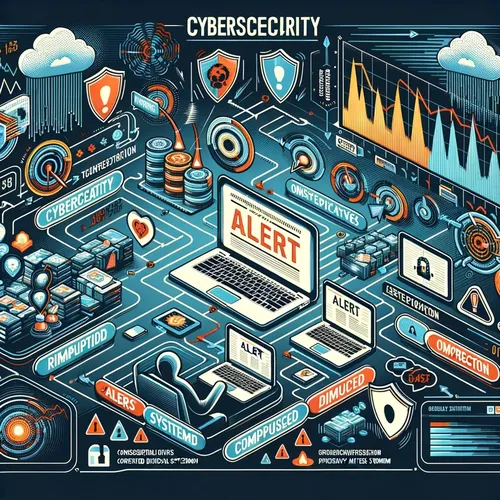Cyber Bombshell: China's Hacker Flex Unleashes Tech Turmoil! Telecom Takedowns, TikTok Trouble & More
- Author
- Quiet. Please
- Published
- Sun 10 Aug 2025
- Episode Link
- https://www.spreaker.com/episode/cyber-bombshell-china-s-hacker-flex-unleashes-tech-turmoil-telecom-takedowns-tiktok-trouble-more--67322705
This is your Red Alert: China's Daily Cyber Moves podcast.
Ting here, and if you thought this weekend would be chill, buckle up, because Red Alert mode is full blast. Today marks another crazy chapter in China's ongoing cyber chess match with the United States. Since Friday, the digital landscape’s been turbulent, with Beijing’s cyber operatives flexing more than just TikTok algorithms. We’re seeing increasingly brazen moves—think wiretap data heists at telecom giants and dark, AI-powered data centers popping up in East Turkestan, all while U.S. emergency alerts sound at DEFCON three-and-a-half.
Let’s go straight to the battlefield. On Friday, the FBI confirmed that China-backed hackers breached several major US telecom companies, targeting wiretap data—the same stuff used for investigations and, let’s be real, a favorite for political blackmail. TechCrunch reported these hackers leveraged old vulnerabilities, some dating back years, exploiting lazy patch management and outdated software. It's not a single, flashy exploit, either—it's like whack-a-mole, but each mole is a different flavor of malicious traffic.
Just yesterday, CISA pushed a priority emergency alert out to security pros everywhere about high-severity vulnerabilities in Exchange Server hybrids, tracked as CVE-2025-53786. In English? Hackers can silently sneak into your cloud setup and escalate privileges—a cyber home invasion with a master key made by Microsoft’s own patch schedule. Dirk-jan Mollema, security researcher, laid bare the flaw at Black Hat, and the timing of Microsoft’s advisory was no accident. It's damage control, live, from Vegas to the Capitol.
Now, spillover from this Exchange debacle: compromised Axis servers—over 4,000 in the US alone—are wide open for remote exploits. Chinese actors aren’t just harvesting comms data; they're routing traffic through small-town water utilities because some of those serve military bases and big hospitals. At DEF CON, hackers scrambled to patch these gaps, but Beijing’s Volt Typhoon group already burrowed deep, leaving spy backdoors for future sabotage.
Let’s talk TikTok, because if ByteDance isn’t on your threat radar, you’re living in fantasy mode. Salih Hudayar from the East Turkestan government-in-exile warns that TikTok is more than cat videos—it's a CCP dossier factory, vacuuming up data on Western users and quietly sending it back to Beijing. Not just for fun; it’s part of a science of surveillance, prepping for political manipulation and future blackmail.
Now, escalation scenarios. If China decides to pull the plug on undersea cables they control, expect a digital blackout. Imagine Wall Street offline and the military scrambling for backup channels, all while social platforms morph into disinfo engines. In the next few days, if these intrusions continue—say a coordinated water system hack or a sudden spike in infiltrated court informant leaks—the response will likely shift from patch-and-pray to active network isolation and maybe kinetic action, if infrastructure destruction begins.
So what’s required right now? Emergency patching is non-negotiable, especially if you run Exchange hybrids or Axis gear. Update default credentials, scan for persistent threats—Volt Typhoon isn’t just a storm cloud, it’s a whole weather system. Security teams need lockdown protocols, network segmentation, and an appetite for rapid recentralization.
Thanks for tuning in and surviving another episode of Red Alert: China Edition with your favorite cyber-wit, Ting. Don't forget to subscribe for your next dose of high-tech chaos. This has been a quiet please production, for more check out quiet please dot ai.
For more http://www.quietplease.ai
Get the best deals https://amzn.to/3ODvOta
